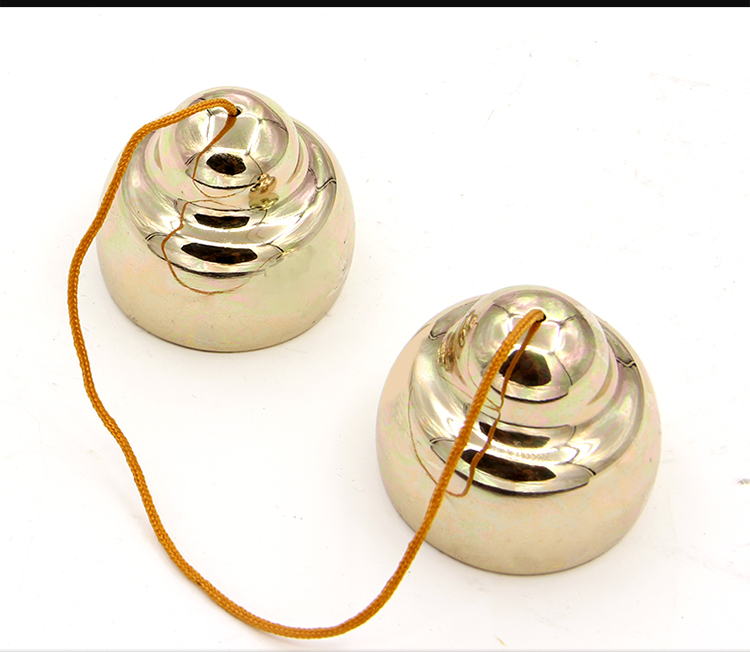pengling overview
 The bell (pinyin: Pèng líng) was called bell cymbal in ancient times. It is a musical instrument of Manchu, Mongolian, Tibetan, Naxi, Han and other ethnic groups. Tibetan called Dingxia. Due to the difference in the spread of the region, in the folk there are names such as jingling, double chime, sound and water, etc. In Shaanxi, it is called dangzi, and there are also called bells for short. It is shaped like a bell, made of copper, one pair of two, connected by ropes, collided with each other and pronounced without a fixed pitch. Often used in instrumental ensembles and opera accompaniment, it is a rhythm instrument.
The bell (pinyin: Pèng líng) was called bell cymbal in ancient times. It is a musical instrument of Manchu, Mongolian, Tibetan, Naxi, Han and other ethnic groups. Tibetan called Dingxia. Due to the difference in the spread of the region, in the folk there are names such as jingling, double chime, sound and water, etc. In Shaanxi, it is called dangzi, and there are also called bells for short. It is shaped like a bell, made of copper, one pair of two, connected by ropes, collided with each other and pronounced without a fixed pitch. Often used in instrumental ensembles and opera accompaniment, it is a rhythm instrument.Popular all over the country. It has a long history and has been circulated in my country during the Southern and Northern Dynasties (386-589). In the frescoes of the Northern Wei Dynasty (386-556) in the Thousand Buddha Caves in Dunhuang, there are also figures of musicians playing bells in the Yungang Grottoes of the Northern Wei Dynasty and the stone carvings of the Sima Jinlong Tomb Gate. During the Zhenyuan period of the Tang Dynasty (785-804), the Pyu Kingdom (now Myanmar) came to my country to present music, calling it a bell cymbal.
It is widely used as percussion instrument in Chinese song and dance, opera music accompaniment and folk instrumental ensemble. Also known as double chimes, bell cymbals, etc. Made of copper. It is shaped like a pair of small cup-shaped bells, with a diameter of about 5.5 cm and a height of about 4.5 cm. There are holes at the bottom of the bells to tie them through. Cool tone. Brass bells have a long sustain and brass bells have a shorter sustain.
In the Palace Museum in Beijing, this instrument was also painted on the murals of the Northern Wei Dynasty in Dunhuang, and it was later spread to the mainland as a unique accompaniment instrument for folk orchestras.
- Pinyin:Pèng líng
- ancient name:Bell cymbals
- Tibetan language:Ding Xia
- type:bumper instrument
- diameter:about 5.5 cm
overview of other similar instruments
- sanyanxiao overview
- Daguangxian overview
- Leiqin overview
- hahao overview
- yandundagu overview
- Han Xiaozheng overview
- Fang Xiang overview
- guanzi overview
- zhuqin (Dao Qin) overview
- zhuiqin overview
- bangzi overview
- three-stringed piano overview
- Gehu overview
- xiao overview
- xiaokonghou overview
- Konghou overview
- Sheng overview
- suona overview
- hulusi overview
- gushao overview
 渝公网安备 50010702504639号
渝公网安备 50010702504639号